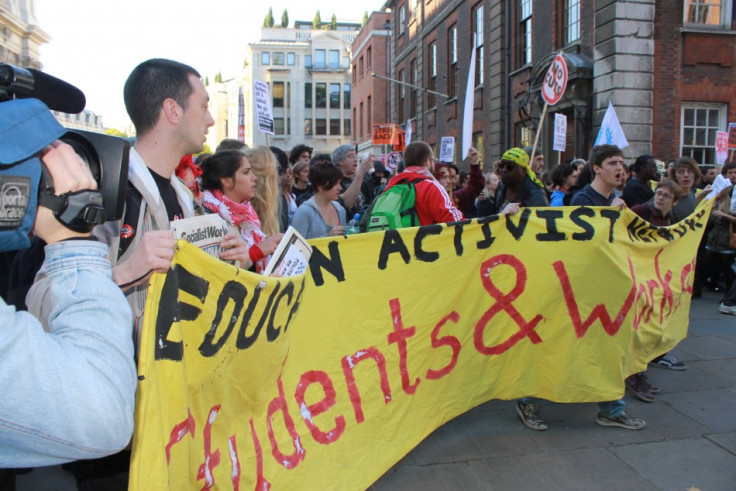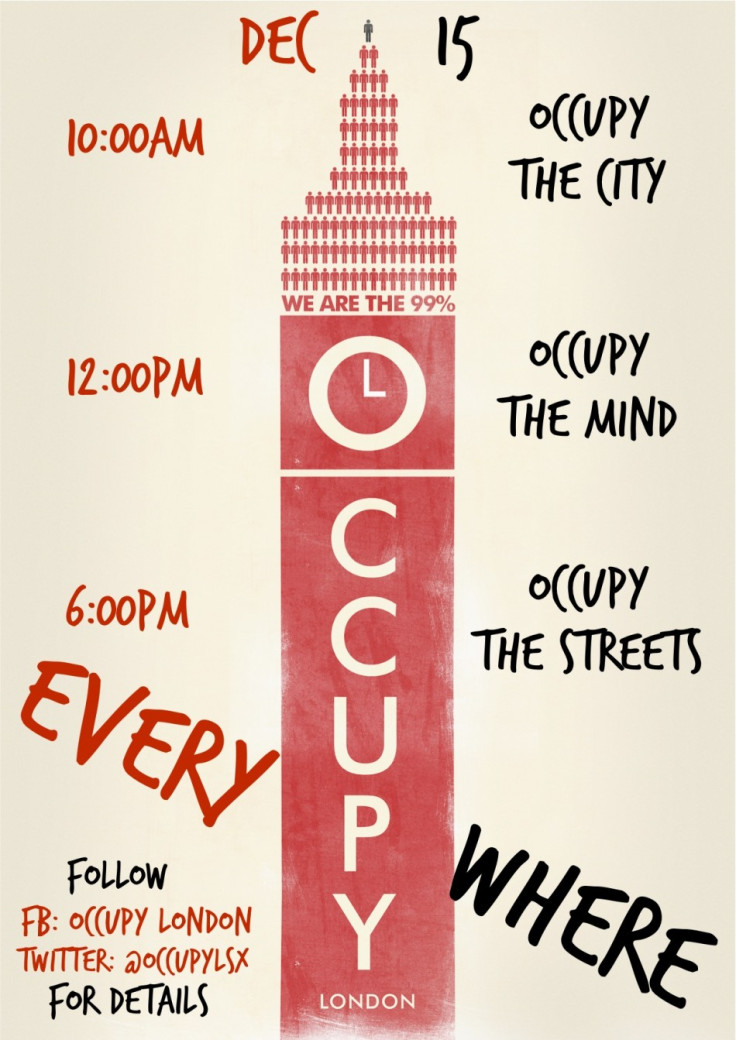Occupy London: Can Occupy Everywhere Reverse the London Protest's Fortunes?

With Occupy London set to break-out of its St. Paul's base, turning the whole of London into its stage, the International Business Times UK examines the movement, exploring where it came from and where it's going.
Call-to-Arms
Though there had been rumblings before, Occupy London only became a concrete plan after Occupy Wall Street and a host of groups associated with it put out a global call-to-arms back in September. Issued on Occupy Wall Street's main site, the post asked all like-minded individuals to join it on 15 October, turning a host of isolated protests into a "world revolution."
The call to arms came after the Occupy Wall Street movement voiced its active support for the "UNITED FOR #GLOBALCHANGE" movement.
Escalating the ongoing series of Occupy protests currently sweeping the globe, the United for Global Change campaign will reportedly see thousands "take to the streets and squares," to protest the world's current economic and political elitism.
"From America to Asia, from Africa to Europe, people are rising up to claim their rights and demand a true democracy. Now it is time for all of us to join in a global non violent protest," read the campaign's opening statement.
"United in one voice, we will let politicians, and the financial elites they serve, know it is up to us, the people, to decide our future. We are not goods in the hands of politicians and bankers who do not represent us. On October 15th, we will meet on the streets to initiate the global change we want. We will peacefully demonstrate, talk and organize until we make it happen."
The Big Day

Beginning at 12:00 pm Saturday 15 October, just outside London's St. Paul's, during its opening hours, despite boasting numbers in the low thousands, as noted by IBTimes reporters at the scene, Occupy London actually came close to ending before it began.
Though the protesters had pledged to, and outside of one or two incidents did, remain peaceful, the UK police's presence at the protest was immediately obvious. London law enforcement had set up blockades, with officers, both mounted and on foot forming lines hampering the protesters' ability to move as a group or reach their intended Paternoster Square campsite.
After it became apparent they would not be able to reach the square splinter groups within the mass of protesters soon began to appear. The fragmentation in the movement's direction soon led to confusion amongst the protesters, with multiple cells all calling for the crowd to follow them.
The confusion soon led to a marked decrease in the number of protesters at St. Paul's with many leaving following conflicting reports of where they were meant to go.
Occupy London only gained a second wind at around 2:30pm when Wikileaks' Julian Assange joined the Occupy London protest, delivering a speech to the crowd voicing his support. After the speech protesters began pitching their tents outside St. Paul's, where they remain to this day.
Trials and Tribulations
Since the movement's opening day, Occupy London has been faced with a series of legal and logistical challenges, chief among which has been the unclear stance of St. Paul's regarding the protesters' presence on its steps.
Just after the protest began, St. Paul's released a statement regarding the Occupy London protest that while not condemning it, did indicate the campsite's presence was not a welcome one.
"St Paul's Cathedral stated on Monday that it was still trying to provide worship and welcome to all in spite of the presence of the protest camp in the churchyard. St Paul's asked everyone to respect this need and to acknowledge the risk to the life of the cathedral posed by the current situation," read its opening statement.
"The cathedral has managed so far to remain open on a reduced basis. The increased scale and nature of the protest camp is such that to act safely and responsibly the cathedral must now review the extent to which it can remain open for the many thousands coming this week as worshippers, visitors and in school parties. Is it now time for the protest camp to leave? The consequences of a decision to close St Paul's cannot be taken lightly."
Yet, following the statement Dr Giles Fraser stepped down from his role as canon chancellor to protest the cathedral and police's attitude towards the protesters -- indicating St. Paul's staff were far from unified in their stance towards the protest.
As well as St. Paul's mixed reaction to the protest, the Occupy London protest also faces the threat of eviction.
After this City of London Corporation mounted a case seeking to evict the protesters from their campsite claiming their presence was against the public's interest. "The City is not bringing these claims to protect the banks, nor to prevent peaceful protest against the financial sector nor to stymie freedom of speech.
"It is a pressing social need in order to protect the rights and freedoms of others. The City's position is: Peaceful protest? Yes. Permanent encampment? No," The Guardian reported City of London Corporation lawyer Mr Justice Wilkie as saying.
The case is set to be heard 19 December and is expected to last four days.
Occupy Everywhere

Despite the laundry list of road blocks facing it, rather than back down, the Occupy London has moved to escalate its presence, announcing its participation in the "Occupy Everywhere" campaign.
"Occupy London - part of the global movement for social and economic justice - calls concerned citizens across the UK to get creative and Occupy Everywhere this Thursday 15 December.
"Occupy Everywhere marks the two month anniversary of the start of the first occupation in London, and alongside events in London. It is expected that other occupations across the UK will also be holding actions," read the movement's opening Occupy Everywhere statement.
Set to begin at 10am Occupy Everywhere will the see protesters meet at the St. Paul's campsite before marching out at midday for "participatory tour of the city of London." The tour will reportedly see participants, "[e]xplore the city, learn about the public/private space dynamic and interact with the surroundings by playing twister, dancing the kaylee [sic] and other creative interventions."
Following the tour a visit by civil rights activist Jesse Jackson has been scheduled on the movement's main site. The last scheduled event, entitled "Occupy the Streets" us set to begin three hours later at 6pm, when the movement will, "[r]eclaim the streets as public commons, using them for our own means of protest [a street party]."
Can it Succeed?
The fact that, like all Occupy protests, Occupy London houses various different groups, each with their own qualms, ideologies and goals makes it even more difficult to predict the future of the London movement.
With each group there for very different reasons, it's likely that if the movement is to end -- short of law enforcement successfully evicting protesters from their campsite after the 19 October court date -- the end will be a drawn out affair.
As each group's goals are either fulfilled or stamped out, it's likely a proportion of the body of protesters will leave, or change their tactics. If this happens the movement may find itself in a state of flux, with different groups coming and going depending on how the protest serves their needs. Were this to occur the movement's power may decline, with it becoming even more unclear what the protesters hope to achieve.
In this sense, a key indication of the movement's future hinges on the success of Occupy Everywhere, with the tactic potentially giving a clear indication, not just of the general public's support for the protest, but also the cohesion of the protesters as a group.
© Copyright IBTimes 2025. All rights reserved.





















